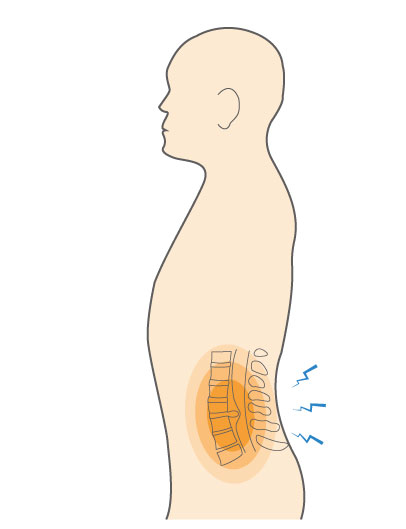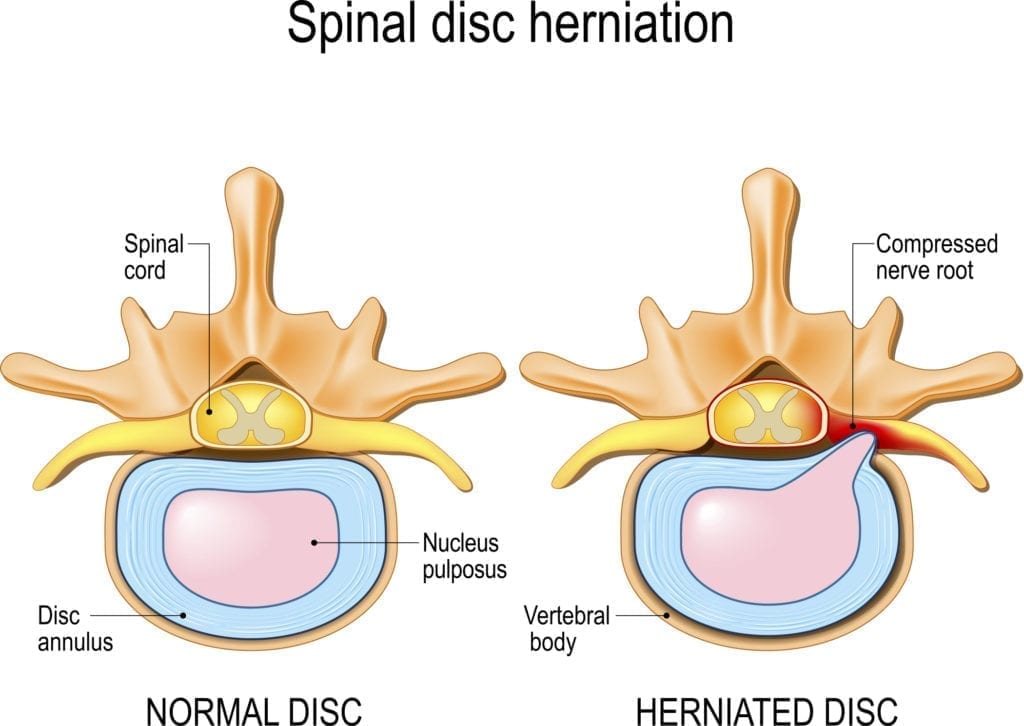Back pain is a common experience for many athletes. A herniated lumbar disc, sometimes called a ruptured or slipped disc, can be a source of this pain. Between the vertebrae that make up the spine are flat, round discs that act as shock absorbers and allow your back to have a wide range of motion. Together, the vertebrae and discs form a column that extends from the neck (cervical) to the lower (lumbar) part of the back. Inside this column are the spinal cord and other nerves that connect to the brain and muscles.
The lumbar discs are tough and fibrous on the outside, with a soft, jelly-like center. The lumbar discs can rupture, causing the soft material in the center to push against the outer ring. A lumbar herniated disc puts pressure on the spinal cord and nerves, resulting in pain that can be severe.
Sometimes the pain from a lumbar disc herniation can radiate down one or both legs. This pain radiating down the leg is often referred to as “sciatica pain.”



